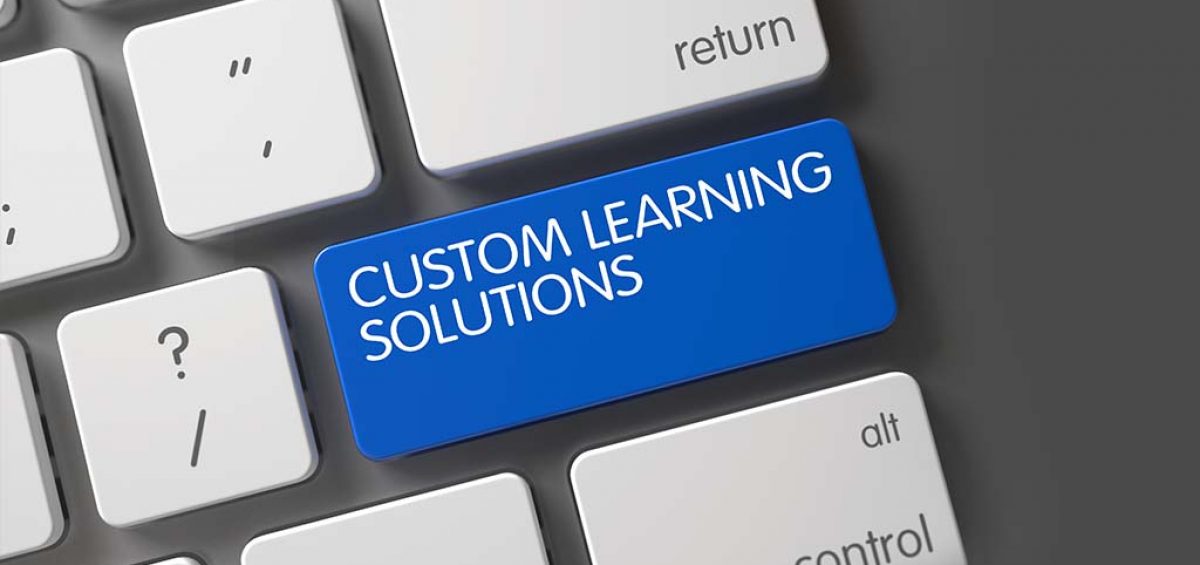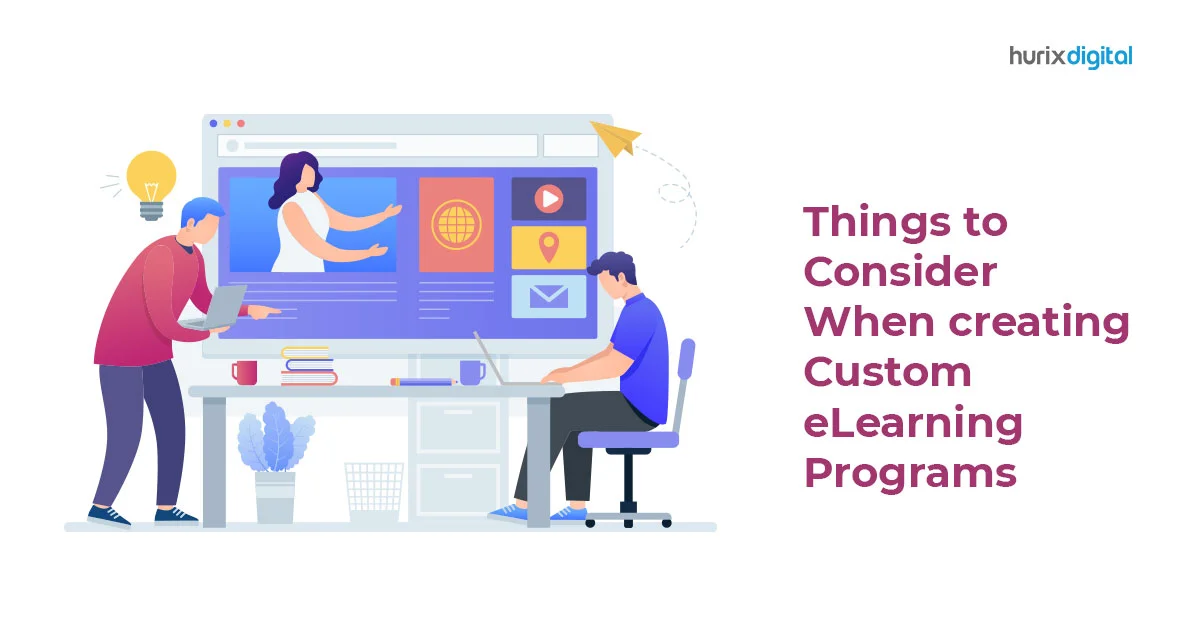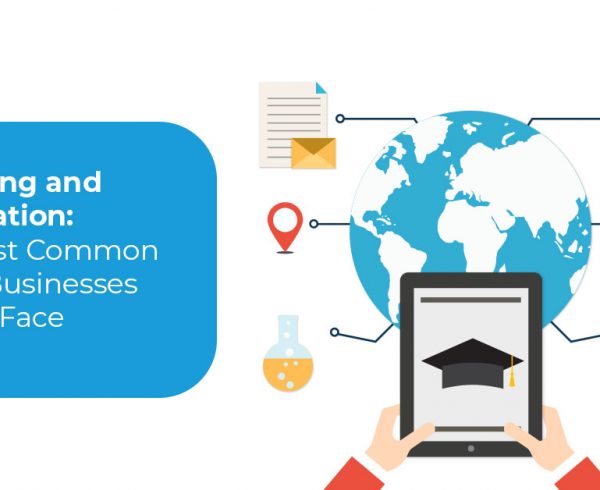Today, we are living in a privileged world where everything from the coffee we drink to clothes we wear can be customized to our liking. On a similar note, custom e-learning content is the new buzzword of today’s business environment as more and more organizations need to train their employees on the products and processes specific to their industry.
The main principle behind designing interactive e-Learning is to treat e-Learning design as an experience for learners, instead of merely treating it as information sharing.
Table of Contents:
- Advantages of Custom E-learning Content
- Difference Between E-learning and Off-the-Shell Content
- Best Practices in Creating Custome E-Learning
- 5 Effective Ways to Develop E-Learning Content
- Conclusion

Advantages of Custom e-Learning Content
One of the primary benefits of custom e-Learning design is the fact that it can be created in various sizes, shapes, or formats, with all types of combinations to suit any organization’s particular needs.
Among other advantages of custom learning content include-
- It is a perfect solution when there is a need for a specialized approach to a topic or training.
- Such e-Learning design allows you to fulfill the requirement for extensive branding and any specific customizations needed for the look and feel of the content.
- Unlike off-the-shelf content, custom e-Learning courses make the process of onboarding new employees less taxing, as it is based on specific products of a company and the way it operates.
So, What's the Difference Between Custom e-Learning Content and off-the-shelf Content?
As the name suggests, custom content is specialized e-Learning design that’s created for customized use with information specific to individual circumstances or a particular industry. Whereas off-the-shelf content or generic content is available ready made without any specialized efforts going into it. Such content is generally ready-to-use after purchase without requiring much input from your end.
Related: Benefits of Investing in Custom eLearning Courses for your Enterprise
Best Practices in Creating Custom e-Learning Content
If you’re convinced with the idea and ready to create your own e-Learning design, here is the list of the guidelines you need to follow-
1. Define the Purpose
Firstly, you need to define the purpose of the training that your custom e-Learning content would be based on. You need to answer the most important questions such as –
- The why behind the training
- Requirements and expectations of the course
- Who is going to take the training?
Based on these, create a design document for your custom e-Learning which will serve as a roadmap for the entire course. Also, at the same time, clearly lay out what, why, and how to help you better accomplish your goals. The aim of the document created above should be to highlight the specific business needs by taking into account the project and the training.
2. Collate the Material Required
Once the objective is identified, the next step is to gather all the existing source material required for the training. These include-
- Relevant videos and audio files
- Notes and existing training material
- Infographics and images
Also, at this stage, you need to identify any missing material followed by what you need to create in order to make the training successful
3. Flesh out the e-Learning Script from the Topic
The next step is to filter the broader topic using the material gathered to create the e-Learning design based on the requirements and demands of your specific project. It is important to make sure that the design you come up with matches the expectations set and is in sync with the desired outcomes in terms of assessments, interactions, etc.

4. Finalize the Aesthetics and Develop Material for your Course
An important step while creating e-learning content, this requires you to define the visual essentials such as the colors, animations, fonts, images, etc., so as to be able to create a comprehensive and visually appealing course. This needs to be followed by developing the final material such as creating graphics, recording video, and audio portions, and more.
5. Assembling Everything
The last and final step is to assemble everything into one cohesive course using a quality software program before moving it to the LMS or the cloud platform for implementation.
Related: 10 Benefits of Moodle based Learning Management System (LMS)
5 Effective Ways to Deliver e-Learning Content
1. Instructor-led training (ILT)/Blended e-Learning
Instructor-Led Training (ILT) is the most suitable delivery method for specialized content as it requires detailed instructions by a subject-matter expert or a live mentor. This approach combines both face-to-face as well as online modules in order to be truly impactful.
Related: Is Blended Learning the Right Approach for Your Enterprise?
2. Video Delivery
One of the best custom e-Learning delivery methods, videos are extremely engaging as well as effective in explaining a topic quickly and concisely. Additionally, video learning does not require any kind of time or place commitment from the learner. They can enjoy the freedom of being able to refer to the material as per their own convenience without having to compromise their daily work routine, travel, or meetings.
Related: How to Simplify Your Business Proposition with Explainer Videos
3. Customer Web-based training (WBT) and CD or a Computer-based training (CBT)
A custom Web-Based Training (WBT) or computer-based training (CBT) is an excellent method of deployment, especially for projects where goals need to be accurately measured. Another advantage of WBT and CBT is the fact that it maintains consistency throughout and ensures every employee/learner receives the training in the same format.
These courses are self-paced with no requirement for learners to interact with an instructor or fellow learners. This works best for self-motivated learners who wish to add new skills to their CV in order to attain professional excellence.
4. Social Learning
In today’s world, the impact of social media is immense. Organizations across sectors are leveraging the power of social media and utilizing the same for corporate learning as well. An increasing number of corporates are encouraging their employees to interact, network, and collaborate with like-minded people on various social media platforms. From discussing problems and resolving queries, to sharing experiences, social collaboration is an excellent platform that covers it all in terms of robust e-learning.
5. Learning Portal Delivery
If you’re looking for a holistic learning delivery method with quick reference needs, a learning portal is the best custom solution as it packs a host of different delivery methods into one.
Whether it is a video, individual micro-learning modules, or any other web-based training method, a learning portal has it all. It allows you to collate all your e-Learning offerings at one single place, that the users can easily access through a common interface.
Related: How to Implement Microlearning in Corporate Training
To Sum It Up
Designing, developing, and delivering the right e-Learning method largely depends on the accuracy of the need analysis of the learners, or the organization and their collaboration methods. Choosing the right e-Learning method can not only make the overall processes streamlined and productive, but it can also offer an enhanced e-Learning experience for your learners.
Get in touch with Hurix Experts on marketing@hurix.com
Related: 7 Reasons Why You Should Revamp Your Old eLearning Courses
Related: Time to Migrate eLearning Courses from Flash to HTML5











